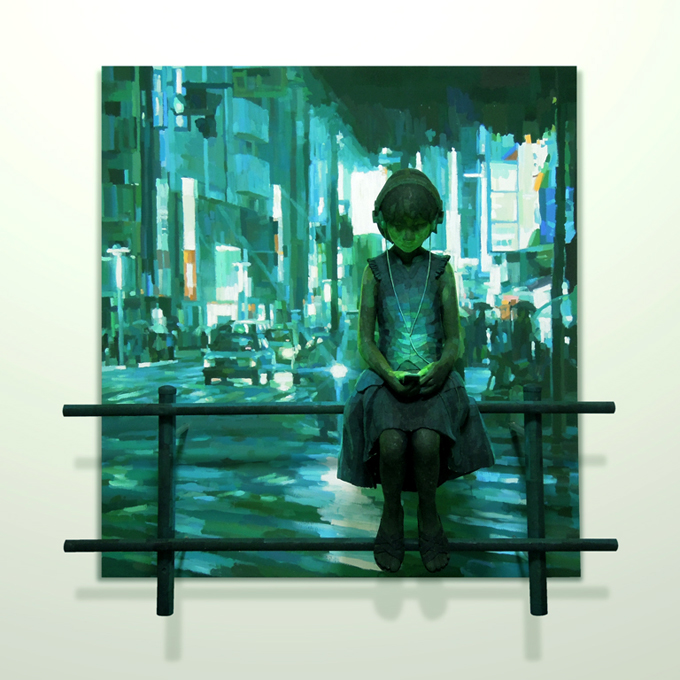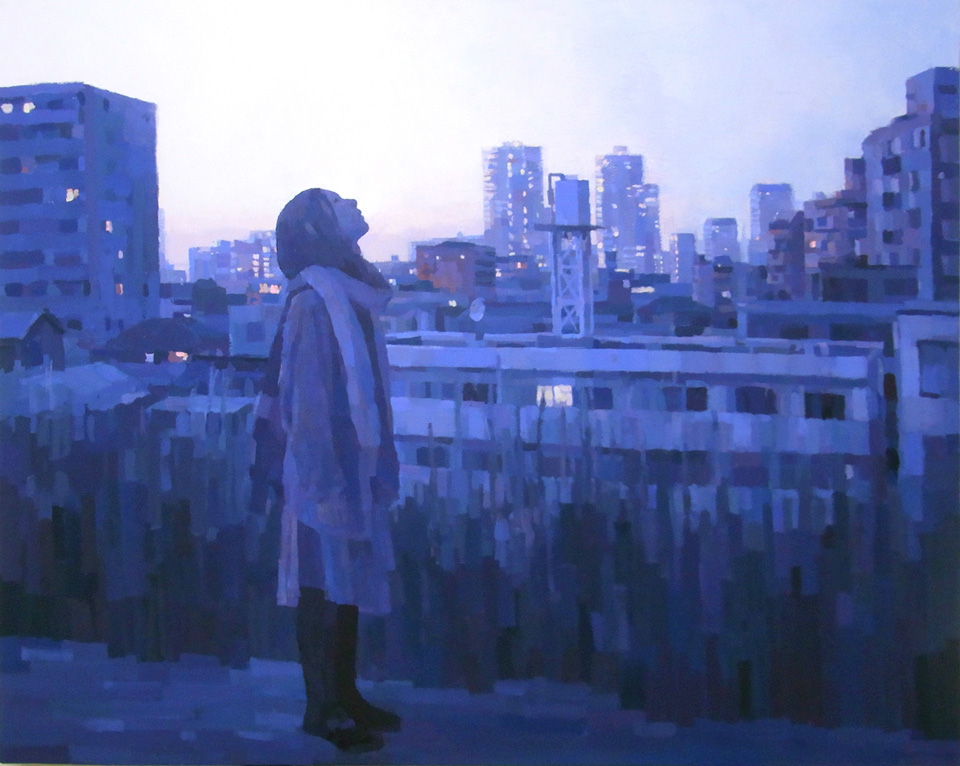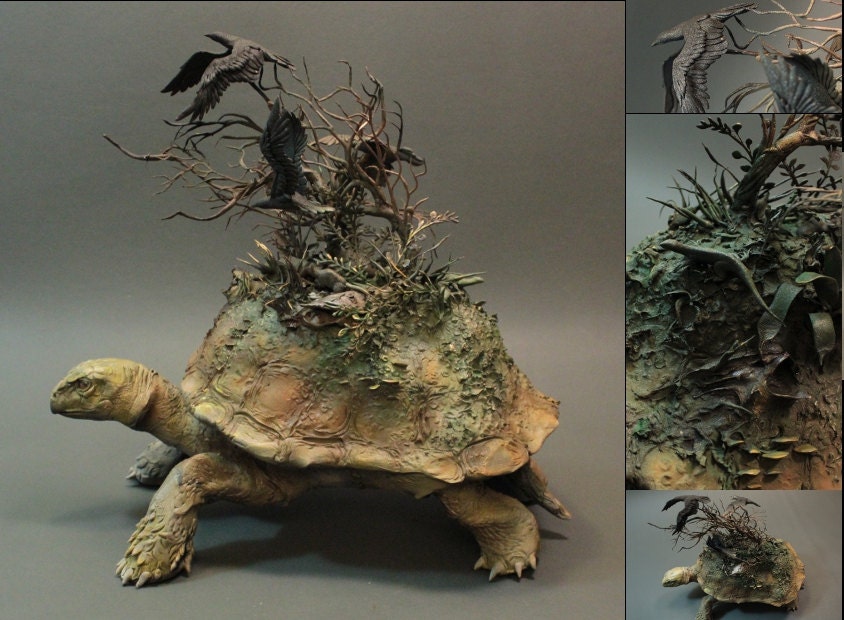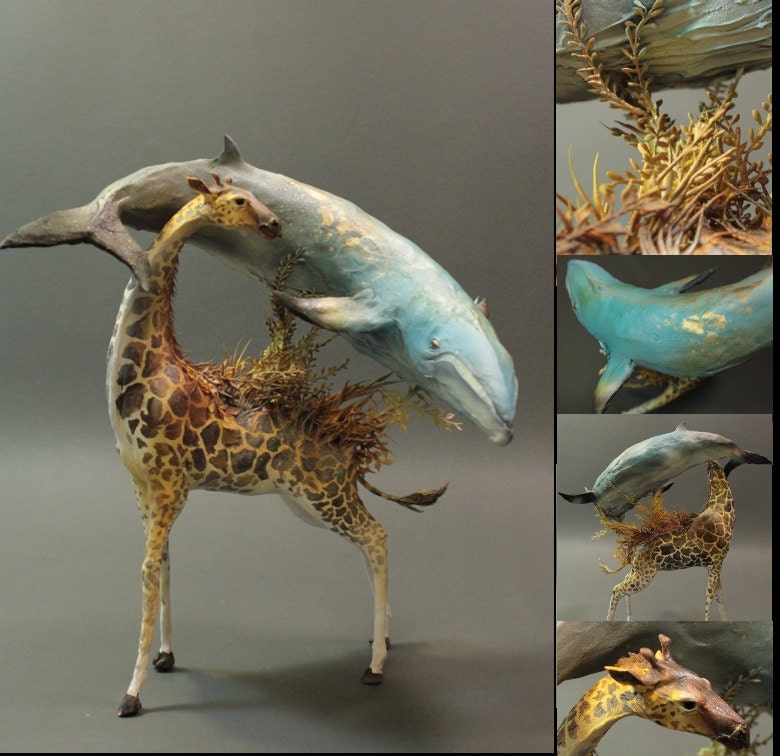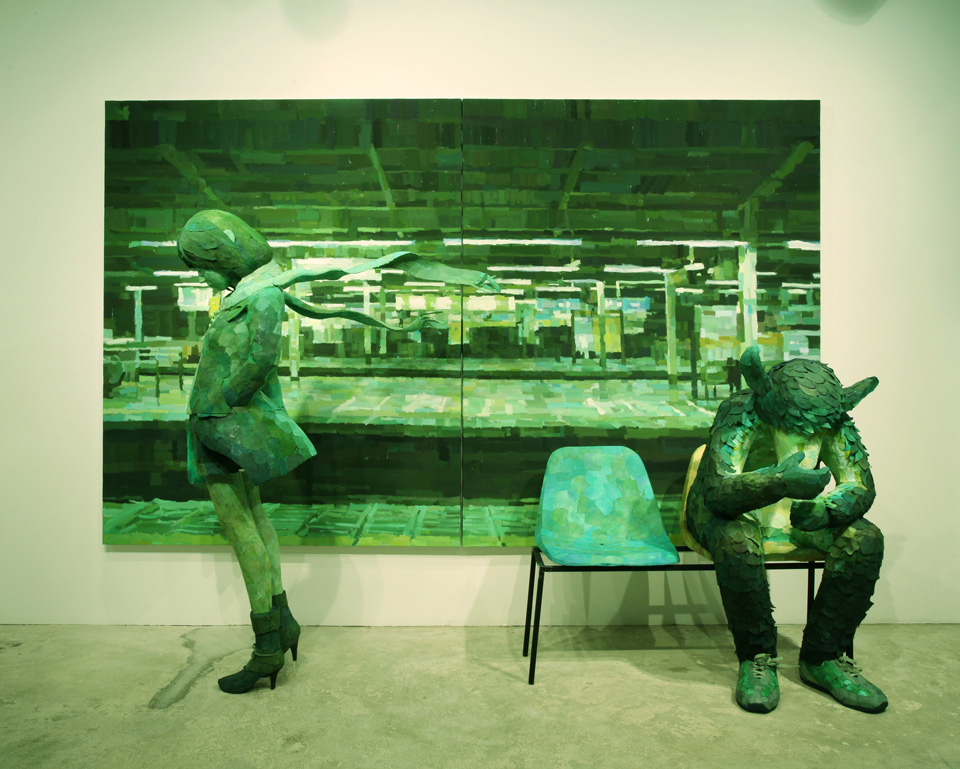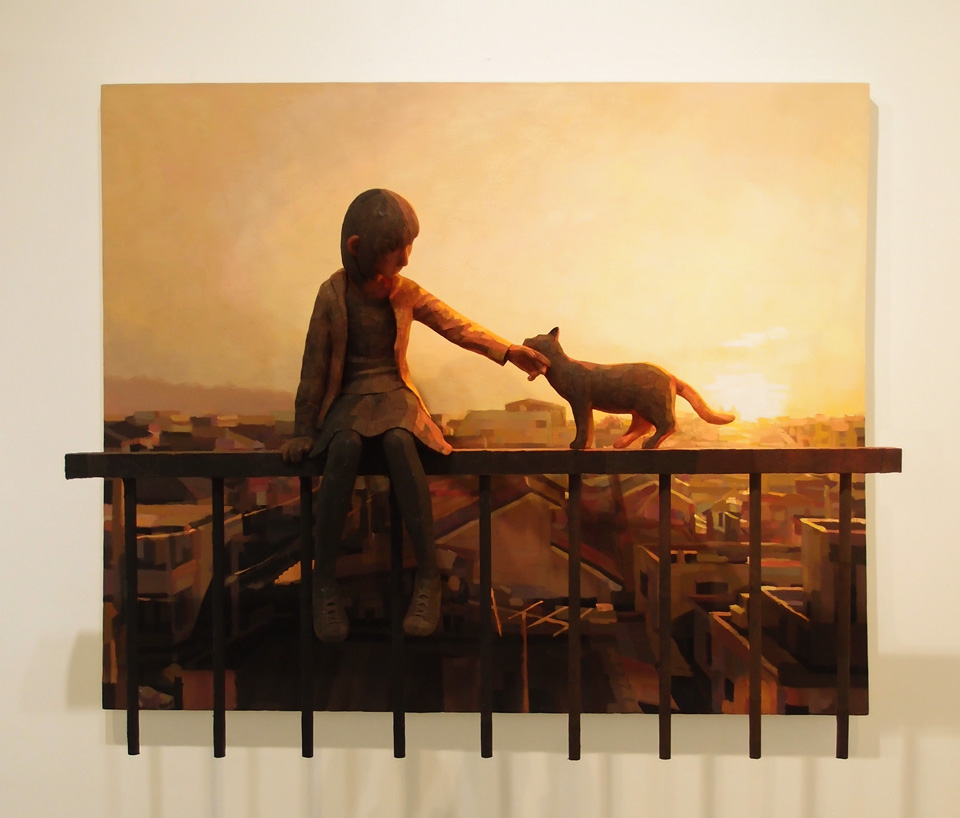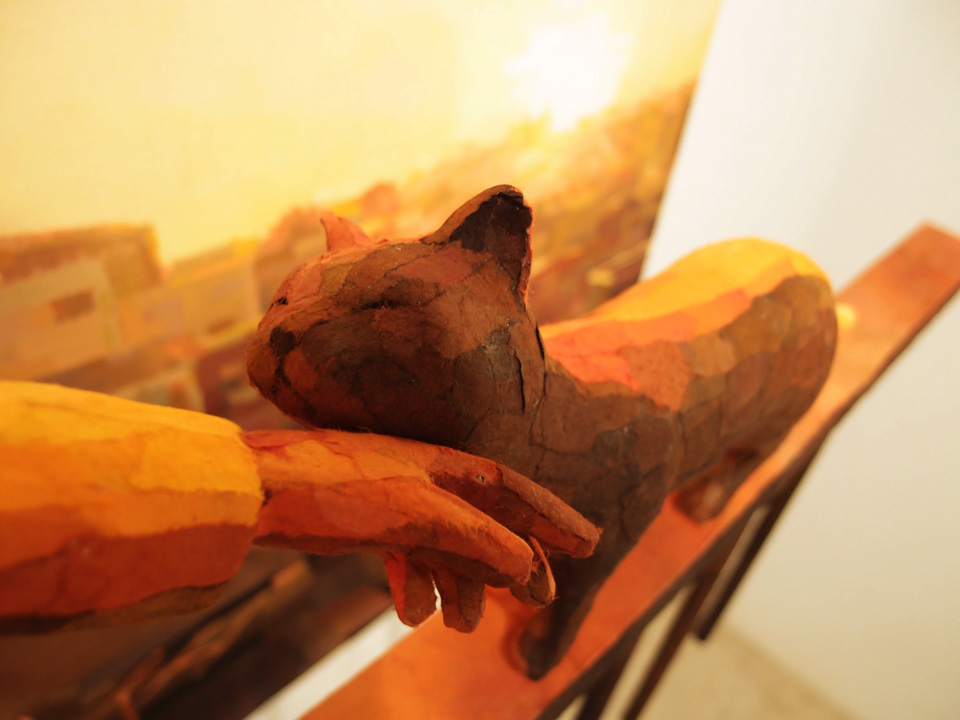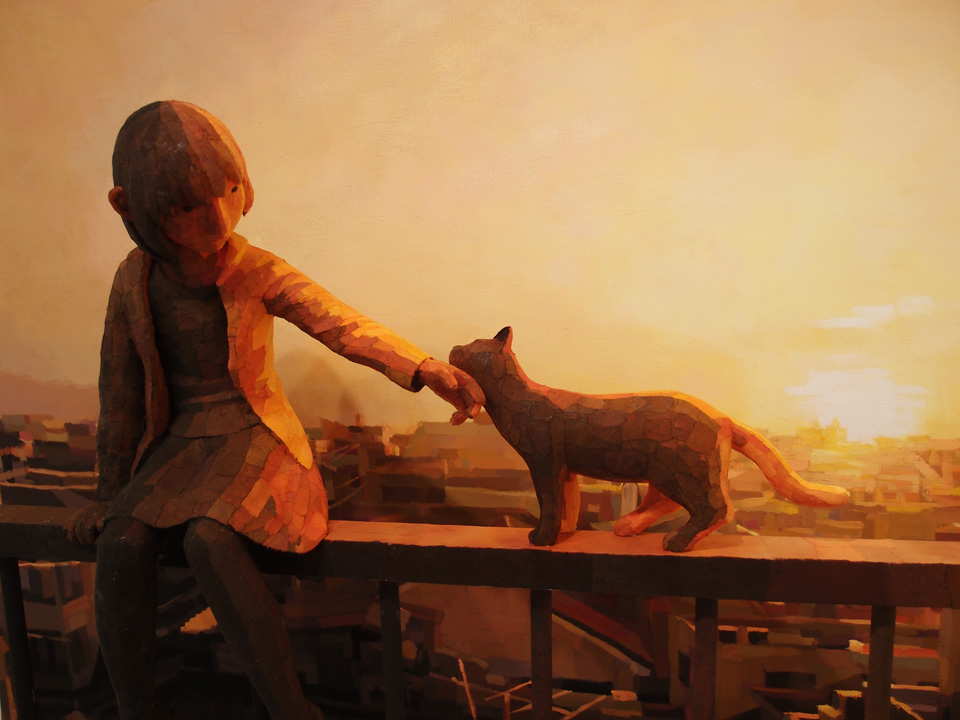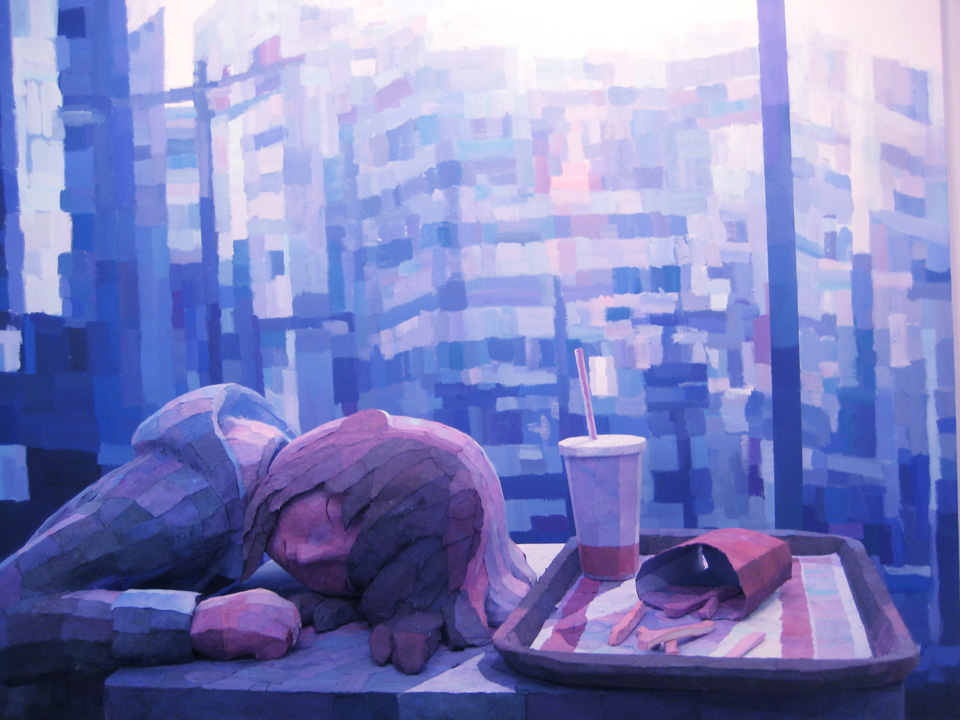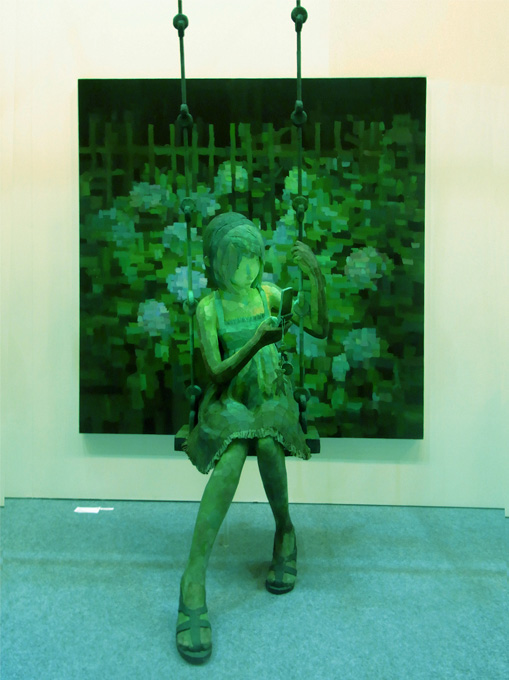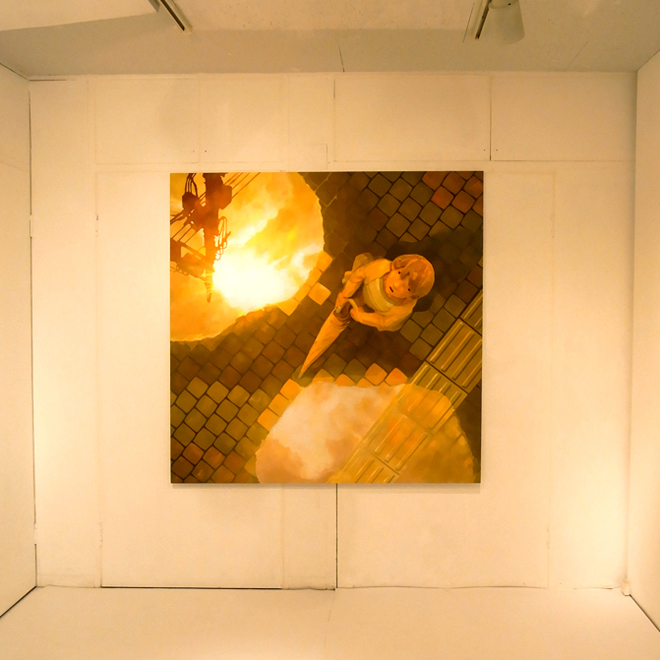
Paolo Troilo is an Italian artist who specializes in paining and drawing. He is self-taught, and commonly works with his fingers instead of brushes.
I really love black and white, especially when the artist has the ability to use color, but chooses not to. These contrasting colors can be very powerful and beautiful to look at. I feel that black and white has just as much potential as any sort of piece that uses a wide array of colors. I believe that it truly does take skill and creativity to make these two colors work and execute them in artistic manner.

Many of his paintings are of men who appear to be in some sort of pain going through trauma of some sort. These drawn out lines, or paint splatters add to this effect and make it look even more painful. In this piece above, the splatters almost look like needles piercing through his arms.

There's no shortage of emotion in his works. He really does create these strong, dramatic paintings that seem to depict rage, pain, fear, power... and countless others.

I feel like he chooses to use men as subjects in his paintings for a reason. Possibly because they might be self-portraits. I also think that for some reason its easier to connect or understand the emotion of male body than a female. At least for me.


I think his medium empowers his work. I don't think some of these pieces would be quite as impactful if they were an illustration, or even a photograph that was altered. The blending and very dark tones of the muscles are very beautiful and I feel like it would not look the same otherwise.
Troilo is incredibly talented and I find his work to be inspiring. I personally love drawing and sculpting men in these contorted and uncomortable emotions and positions and these paintings are very good at creating a dramatic and tense moment.
http://www.troilo54.com/
